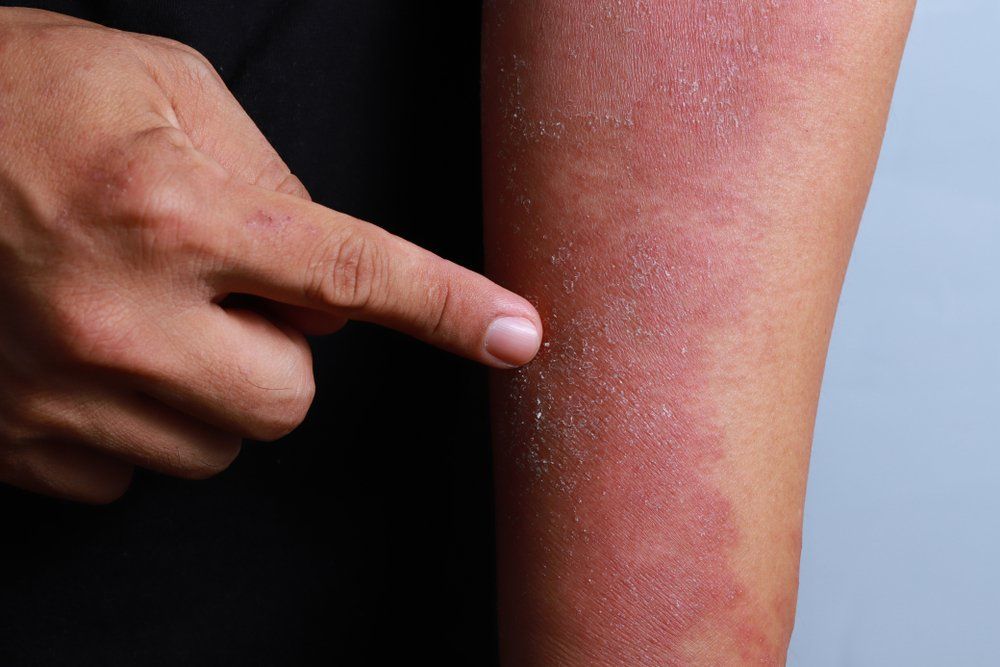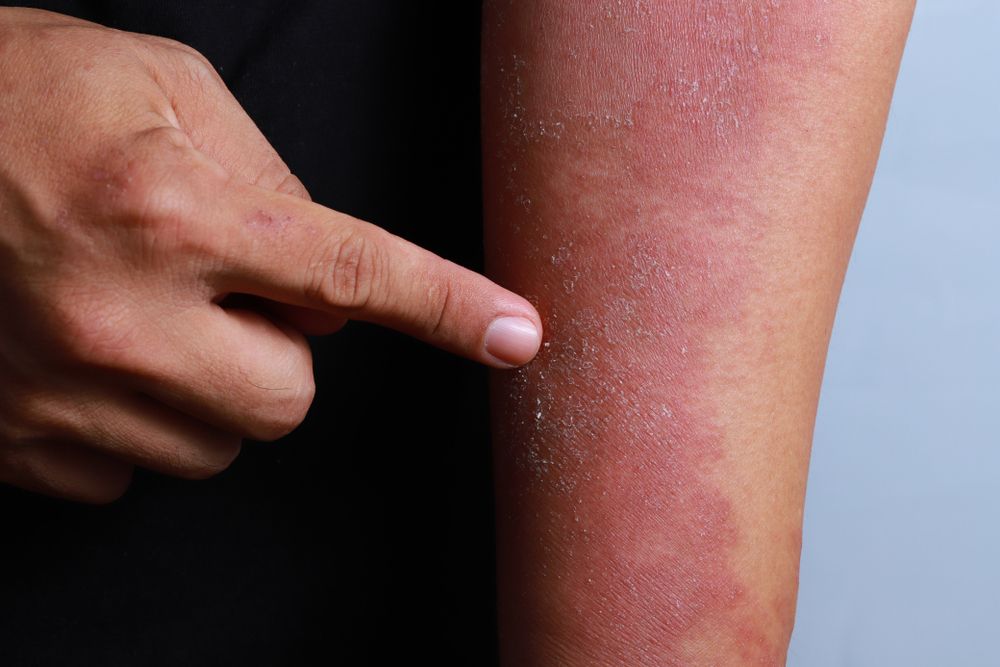- Case-Based Roundtable
- General Dermatology
- Eczema
- Chronic Hand Eczema
- Alopecia
- Aesthetics
- Vitiligo
- COVID-19
- Actinic Keratosis
- Precision Medicine and Biologics
- Rare Disease
- Wound Care
- Rosacea
- Psoriasis
- Psoriatic Arthritis
- Atopic Dermatitis
- Melasma
- NP and PA
- Skin Cancer
- Hidradenitis Suppurativa
- Drug Watch
- Pigmentary Disorders
- Acne
- Pediatric Dermatology
- Practice Management
- Prurigo Nodularis
- Buy-and-Bill
Article
Appreciating the role of microbial communities on the skin
Author(s):
Microbial colonization in the development of inflammatory conditions and immune-mediated conditions is a hot research topic, and new dermatologic therapies can potentially result from greater understanding of the role of microbial communities on the skin and in the gut.

Lawrence F. Eichenfield, M.D.New tools that assess the presence and quantities of organisms on the skin and the skin microbiome are opening doors to new therapies, says Lawrence F. Eichenfield, M.D., a Professor of Dermatology and Pediatrics, Vice Chair, Department of Dermatology, Chief, Pediatric and Adolescent Dermatology, University of California, San Diego School of Medicine, Rady Children's Hospital, San Diego, CA.
"When we are taking cultures, we are only looking at a small subset of organisms that are on the skin," says Dr. Eichenfield, in an interview with Dermatology Times. "The tools are evolving from media that allow you to grow a select subset of bacterial culture to genomic techniques that assess the presence and quantities of organisms reflected by their genetic material on the skin. The skin (microbiome) and the gut (microbiome) are areas of very hot research. Both are important interfaces between the outside and the inside. There is an interplay between us and the organisms around us. We live in the environment, and microbes are in the environment, and a set of microbes lives with us and on or in us."
Earlier this year, a symposium was held at the annual meeting of the Canadian Dermatology Association on the role of the microbiome in skin pathologies.
The knowledge being gained from more specific and expanded genomic analysis is being used to provide insights about common pediatric conditions such as diaper rash, explains Dr. Eichenfield.
Proper cleansing of the diaper area requires maintaining function of the skin barrier and repairing the barrier when necessary. Factors involved in care of the diaper area include the pH of the skin, irritant and allergic potential of contactants, topical agents that are applied, as well as the local microbiome.1
"In pediatric dermatology, we are interested in the developmental changes that happen in microbial colonization," says Dr. Eichenfield. "A condition like diaper rash is influenced by what is in the stool and what is in the gut."
Next: Microbiomes and atopic dermatitis
With a condition like atopic dermatitis, for example, it has been observed that staph aureus is present in both lesional and non-lesional skin, and it has been established that treatment with antimicrobials or antibiotics or anti-inflammatory therapies all serve to decrease flares of atopic dermatitis and decrease staph aureus, explains Dr. Eichenfield.
"The question has been raised about when colonization begins and what is happening at the skin level," says Dr. Eichenfield. "What allows staph (aureus) to set up shop on the skin of an individual with atopic dermatitis? Elegant research by Richard Gallo and colleagues at the University of California San Diego has shown that some bacteria on the skin (Staph hominus) normally produces anti-staphylococcal factors and that this bacteria is deficient in atopic dermatitis. It has raised the question of whether transplanting the 'good bacteria' could minimize staph aureus and improve atopic dermatitis."2
The mechanisms by which the microbiome participates in defense of the host are not well-known but research into the topic is ongoing.3
"There is an interplay between the innate and adaptive immune systems and that interplay influences what is on the skin," says Dr. Eichenfield.
It has been put forth that p. acnes is not part of the pathogenesis of pre-pubertal acne, but now current microbiome techniques can investigate if that is the case. "We will be able to see if p. acnes is there or not," says Dr. Eichenfield. "If it is not there, then the question is what is there? Are the microbes important in the pathogenesis?"
Next: Microbiome influence on other dematological diseases
There are other dermatological diseases where it is unknown if the microbiome is an influence in the development of the disease, says Dr. Eichenfield.
Guttate psoriasis is a condition that is linked in young children to strep throat, but microbiome analysis may reveal other microbes that may play a role in the onset of guttate psoriasis in children and potentially other types of psoriasis as well, notes Dr. Eichenfield.
"Are there other microbes that could be responsible for the onset of it (guttate psoriasis) or for flares of it?" says Dr. Eichenfield.
Indeed, microbial colonization in the development of inflammatory diseases and immune-mediated diseases is being explored, according to Dr. Eichenfield.
"Does feeding or exposure to different microbes through eating, which affects gut colonization, influence the immune system in general including the skin immune system?" he asks.
Atopic dermatitis is less common in geographical areas that are more rural where children are exposed to farm animals, notes Dr. Eichenfield.
"It suggests exposure to a broad set of microbes might prevent some inflammatory skin diseases," says Dr. Eichenfield.
Rosacea is another condition under study that involves complex immune mediation on the skin associated with abnormalities in the innate immune system and likely influenced by what is colonized on the skin, explains Dr. Eichenfield.
Treatment therapies
Therapies will target dysbiosis and changes in the adaptive immune system, adds Dr. Eichenfield. "Therapies that mediate the microbiome can be topical or systemic," he says.
Whether consuming probiotics and prebiotics is disease-modifying in a positive way is not known, notes Dr. Eichenfield.
"One of the problems is that the terms 'probiotics and prebiotics' are so broad, used for a host of organisms without a lot of good clinical research," explains Dr. Eichenfield. "It's like saying 'vitamins are good for you.' We will need to figure out the benefits and potential risks of different pre and probiotics in varying clinical circumstances. It is difficult now to know which are helpful."
Dr. Eichenfield mentions that some experts recommend eating yogurt when an individual is on oral antibiotics, for instance, as a way to repopulate the gut with microbes "killed off" by the medication. "But I have seen patients buy pasteurized yogurt, which doesn't contain active organisms," notes Dr. Eichenfield. "That won't work. And if you go to a store, like Walmart or the equivalent, you will see a large number of 'probiotic yogurts'. Which ones should we recommend? It is really hard to know.
"There is much to learn, and the microbiome work adds an excitement to the future of dermatology," says Dr. Eichenfield.
Disclosures: Dr. Eichenfield reports no relevant disclosures.
References:
1Coughlin CC, Frieden IJ, Eichenfield LF. Clinical approaches to skin cleansing of the diaper area: practice and challenges. Pediatr Dermatol. 2014;Suppl 1:1-4.
2Williams MR, Gallo RL. The role of the skin microbiome in atopic dermatitis. Curr Allergy Asthma Rep. 2015;15:65.
3Gallo RL. S. epidermis influence on host immunity: more than skin deep. Cell Host Microbe. 2015;17:143-4.






